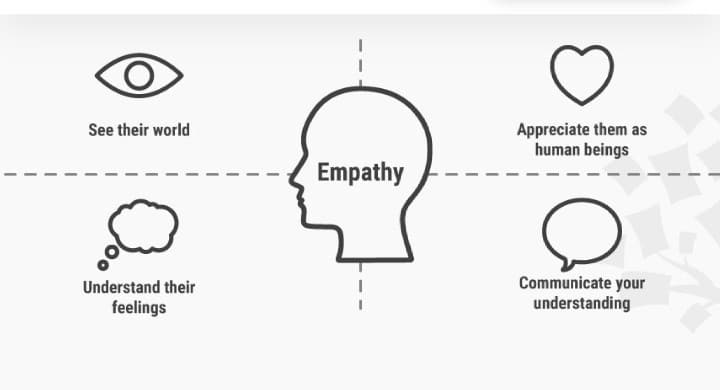It’s so easy to get caught up with work that you forget to take care of other aspects of your life. That’s why it’s important to learn how to achieve a work-life balance. Hence, with comprehensive examples, you’ll learn how to create and maintain a healthy work-life balance in this chapter.
What is Work-Life Balance?
Work-life balance is a term that is frequently used to describe a trade-off. You strike a balance between professional assignments and time spent with family, friends, and personal hobbies.
It can also refer to how much flexibility team members believe they have. Many professional work cultures and expectations have shifted as a result of technological advancements. As a result, the relationship between “work” and “personal” time has become more interwoven and fuzzier.
It’s no surprise that this concept is tough to develop (or rebuild) for ourselves.
What Are The Most Typical Reasons For a Lack of Healthy Work-life Balance?
Over the last five years, more than a quarter of full-time employees worldwide think it has gotten more difficult to balance work and family. The following were the most common causes:
#1. Increased expenses without a wage increase
This was rated by one-third of employees as the most difficult aspect of maintaining a work-life balance.
#2. Increase in workplace obligations.
Additional job duties were recognized as a key cause of poor work-life balance by over half of millennials and Gen X participants.
#3. Increased domestic responsibility.
More than 40% of millennials and Gen X participants said having more responsibilities at home, such as caring for children and aging relatives, makes it more difficult to balance work and personal life.
#4. Working more hours
Almost half of the managers (46%) work more than 40 hours each week, and 40% say their hours have increased in the last five years.
#5. Having a family.
More than a quarter (26%) of millennials indicated they work more after having a child. After having a child, 50% of women and 22% of males took a career pause.
How to Improve and Maintain a Healthy Work-Life Balance
It’s one thing to discuss work-life balance. It’s another thing to do it.
Here are practical suggestions for enhancing your work-life balance:
#1. Learn to say “no”
Learning to say no can be one of the most difficult soft skills for any serious professional to master and apply. However, it is a vital aspect of establishing boundaries.
To begin, you must examine your average day’s responsibilities and learn to articulate and prioritize what you have on your plate.
It can be beneficial to know that saying “no” to less important things frees up time and energy to say “yes” and attention to those things that are important to you.
#2. Take frequent pauses.
Even a 30-second microbreak has the potential to:
- Increase your concentration.
- Reduce your stress.
- Maintain your interest
- Make your job more fun.
It’s especially crucial to keep this in mind if you work from home.
MIT senior lecturer Robert Pozen suggests taking a 15-minute break every 75-90 minutes. This allows your brain to consolidate and remember information.
According to The Energy Project, humans naturally transition from full concentration to physiological exhaustion every 90 minutes.
#3. Take advantage of your lunch break.
If your workplace provides a lunch break, you have the right to take advantage of it.
This implies you shouldn’t be expected to eat at your desk and work through lunch all the time.
You can use this time to relax and eat your meal mindfully. If your stress levels are severe or you suffer from chronic stress, you can also do short meditations or breathing exercises.
#4. Request some leeway.
Open, honest discussions about your requirements, as well as those of your employer and team, can lead to fruitful solutions.
Flextime, a reduced workweek schedule, job sharing, and other innovative choices are examples of this.
#5. Make your health a priority.
Recognizing the significance of physical, emotional, and mental fitness is the first step toward making it a priority in your life.
Use the habit stacking idea to incorporate basic, helpful behaviors into your day. Consider the following habits:
- Every day meditation
- Movement/exercise
- Social interaction
- A practice of thankfulness
- Choosing to use your paid time off
#6. Exercise self-compassion.
Perfectionism is one of the most significant methods to develop a sense of work-life balance.
Perfectionism may have provided some success in school and early in one’s profession. However, the stress it produces builds up over time. As our obligations grow, so does the demand on our systems and emotional resources.
It is critical to remember that life is not always easy. Recognizing that everyone struggles and that you will not always get it “right” allows you to make a change toward a more compassionate growth-and-learning attitude to work and life. This can help to maintain a sense of balance.
#7. Set boundaries so you may fully unplug.
Set your work hours and convey them to your coworkers and customers so that you have clear boundaries. This should specify when you’ll be available to work and when you won’t be.
Setting up an autoresponder to notify folks who contact you via email that you are unavailable is an easy approach to accomplish this. This message might also inform them of when you will answer.
This relieves the need to constantly check business emails.
Consider establishing a way for key stakeholders to contact you in the event of a serious emergency, so you can rest assured that you are not missing anything critical.
#8. Invest in your relationships.
A lack of good relationships increases the probability of dying prematurely from any cause by 50%. That’s equivalent to smoking 15 cigarettes every day.
Solid connections and social support, on the other hand, can improve health and prolong longevity.
Spend time cultivating relationships that are important to you. If you performed the preceding steps to unplug, you will be able to pay greater attention to the people with whom you spend your time.
#9. Make time in your calendar for family activities.
Schedule some time specifically for your family.
To make this work, everyone in your family must prioritize this time. Check that everyone is on the same page. You must all decide to take the required efforts to carve out this time.
You can also use this opportunity to phone distant family members or other loved ones.
#10. Make quality time a priority.
Rather than spreading yourself so thin that nothing seems fulfilling, figure out what matters most to you.
A values exercise or exploring your Ikigai can be beneficial in clarifying and articulating this for yourself. Take an honest look at how you use your own time based on what you learn. Which activities and relationships enrich your life and which drain your soul?
With this knowledge in hand, decide where you’ll spend your time. Make a point of prioritizing important connections and activities.
Remember, one of those partnerships is with yourself! Allow yourself to have quality time for yourself to re-energize when you have downtime.
#11. Begin small.
Better habits can help you feel better about yourself. These can include things like being active and optimizing your food habits. However, developing these behaviors can be tough.
Who hasn’t had a New Year’s resolve that fails by mid-February? Motivation alone is insufficient to motivate behavior change.
The ability to do the activity and a dependable reminder that urges us to do it is the other crucial factors for success. According to BJ Fogg, author of Tiny Habits, one approach to success is to create something so basic and small that you have no excuse not to do it. You’ll be able to complete it even if you’re pressed for time, sick, or distracted.
#12. Seek assistance
High-achieving professionals are frequently guilty of taking on too much responsibility. They don’t want to “bother” anyone by requesting assistance.
Identity (“I’m supposed to be the one who has it all together”) or feelings of obligation (“Who else will do it if I don’t?”) can both play a role.
Consider that asking for help provides others the gift of giving — as well as being a part of a solution and support system. This increases the value of mutual partnerships for everyone concerned.
Examples of Work-Life Balance
Here are a few examples of what a healthy work-life balance looks like:
#1. Work from Home Opportunities
Work from home (WFH) has become the norm for professionals all around the world. Businesses have altered their views on remote employment, from market leaders to local companies. Employees can work freely and be just as effective at a home office as they can in a corporate setting.
#2. Flexible Scheduling
Traditional 9-to-5 jobs have been losing ground to flexible scheduling in recent years, and the COVID-19 pandemic has only exacerbated this tendency. People no longer wish to defy their circadian rhythms or work during unproductive hours.
#3. Plans for Healthcare and Wellness
Employee health insurance is now considered a necessity rather than a luxury. This is not surprising. We constantly expose our health to numerous hazards at work, whether it’s an uncomfortable chair, stressful negotiations, or hours of work in front of a computer screen. As a result, it is only reasonable for businesses to contribute to their employees’ physical and mental health.
#4. Family-friendly Policies that are Family-Friendly
A successful work-life balance approach addresses the unique needs of each employee. While it is difficult to fulfill every single demand, ensuring that your firm has a comprehensive family policy in place is a definite approach to enhancing employee retention.
#5. Defined Boundaries
While flexible scheduling and unrestricted work from home allow employees to be full rulers of their lives, these benefits, like all great things in life, have a downside. In actuality, many begin working nonstop, responding to emails and messages in real-time, or staying up late to make up for the extended break they may have taken to walk their dog.
#6. Education Strategy
Employees regard education as one of the most valuable benefits. It’s not surprising, either. The vast majority of employees want to remain competitive and knowledgeable about industry trends and best practices. As a result, they aim to future-proof their jobs by engaging in continual learning.
#7. Volunteer Opportunities
It’s difficult to imagine a comprehensive work-life balance program that doesn’t include volunteer opportunities. Volunteering is essential for employees to feel like humans rather than robots who grind from dusk to dawn. Nothing beats the satisfaction of knowing that your act of kindness has improved someone’s life.
#8. Four-day Work Weeks
In recent years, there has been much talk about a four-day work week. While some firms and thought leaders see it as the next stage in workplace transformation, others are skeptical that the stated employee productivity boost can be sustained in the long run.
#9. Unlimited Paid time off
Companies are increasingly focusing on paid time off (PTO) programs rather than giving a set number of days for vacations, day offs, and sick breaks. PTO allows employees to manage their time as they see fit with less bureaucracy and the option to take more frequent, albeit shorter, vacations.
#10. Budget for Travel
Offering extensive vacation plans is not the only way to encourage employees to take time off, particularly if unused vacation days are paid out. Working in fast-paced situations, paired with today’s achiever culture, leads to people storing up vacation days rather than making the most use of them to rest.
Read Also: FEDERAL LAWS THAT PROTECT EMPLOYEES: Why Your Boss Cant Mistreat You
Is 8 to 5 normal working hours?
Yes. According to the same standard, full-time employees around the world are expected to put in 40 hours per week, spread out over five days and an 8-hour shift each day.
What causes work-life imbalance?
60% of workers who are experiencing work-life imbalance point the finger at their bad or overbearing managers. 39% of workers say they routinely put in extra time at the office. As much as 39% of workers complain about having no say over their schedules.
Why is work-life balance hard?
Maintaining a work-life balance can be challenging if you insist on being solely responsible for the quality of your work. You’ll never be able to delegate, which means your business won’t grow. You can’t be free when you’re hampered by your ego, and you can’t help but stunt the development of those under your supervision.
What is heavy workload?
A heavy workload occurs when an individual is tasked with more work than can be accomplished in a reasonable amount of time. It can happen when a company is trying to save money or when an employee isn’t properly managing his or her workload.
Is work/life balance more important than salary?
The concept of a work-life balance, however that term is defined for each individual worker, is gaining prominence. Indeed, for many people, it is even more crucial than money in the bank. Showing that they value their employees’ time off is essential for any business that wants to attract and keep the best people.
Which jobs have better work-life balance?
Meanwhile, there are some better jobs that can help you sustain a healthy work-life balance. These jobs are not limited to:
- Digital marketing manager
- Social media manager
- Substitute teacher
- SEO manager
- Data analyst
- Software engineer
- Digital content manager
- Web developer
What is the impact of poor work-life balance?
Stress is often the result of a lack of work-life balance. Factors such as job stress, isolation on the job, low pay for hard work, job insecurity, and a feeling of powerlessness at work have been linked to an increased risk of mental health problems. Stress occurs when people are confronted with difficult or dangerous circumstances.
In Conclusion,
You can learn to “flow” with work and life, depending on your concept of work-life balance. We simply need to learn to flow with our lives in order to understand where the boundaries are and when to activate work mode, family mode, friend mode, personal mode, and so on.
If we learn to be present and in the moment, our lives will feel more balanced, and the importance of work-life balance will be felt for a long time.
Work-Life Balance FAQs
How many hours is a good work-life balance?
To maintain a healthy work-life balance, you should work slightly fewer than 40 hours a week.
Why work-life balance is important?
A healthy work-life balance helps to maintain mental health and prevent burnout.
How many hours is unhealthy work?
Working 55 hours or more per week is very unhealthy.






